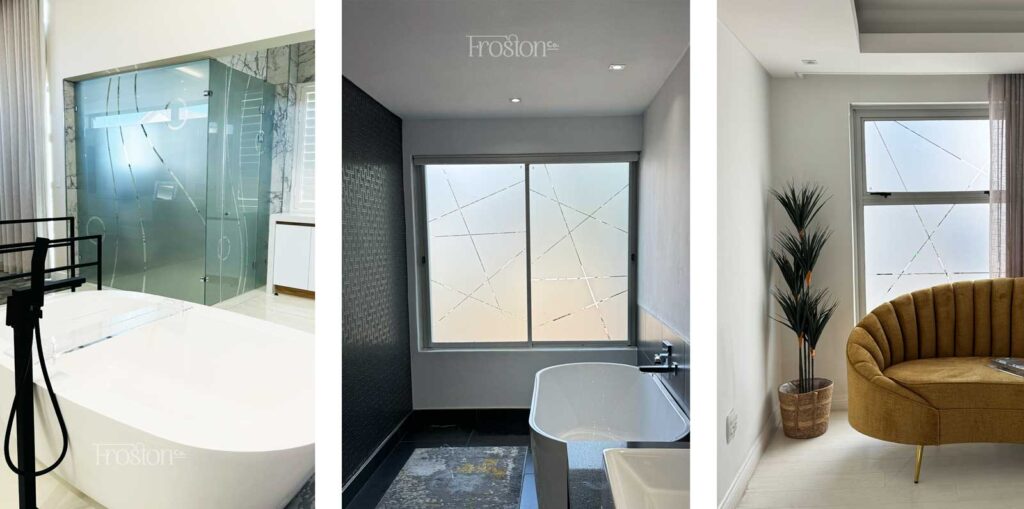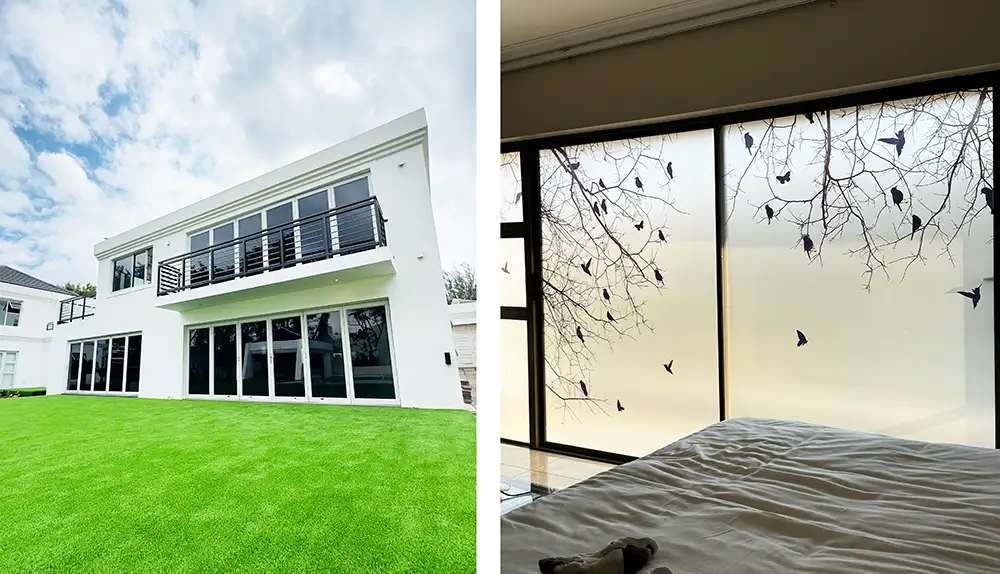Window Tinting vs. Window Frosting: What’s the Difference & Which One Do You Need?
When it comes to upgrading your windows, two popular options often come up—window tinting and window frosting. While they may seem similar at first glance, they serve different purposes and are ideal for different situations. If you’re wondering which one is right for you, let’s break it down in a way that makes sense.
What is Window Tinting?
Window tinting involves applying a thin film to the glass that reduces glare, heat, and UV exposure while still allowing visibility. It’s commonly used in cars, homes, and office spaces to improve comfort and energy efficiency.
Why Choose Window Tinting?
✅ Heat Reduction – Keeps indoor spaces cooler by blocking out excessive sunlight.
✅ Glare Control – Perfect for rooms with screens (like TV lounges or offices) where sunlight causes distractions.
✅ UV Protection – Helps prevent furniture, floors, and upholstery from fading due to sun exposure.
✅ One-Way Privacy (Daytime) – Tinted windows allow you to see out while making it harder for people to see in—especially during the day.
Best For:
✔️ Offices with large windows
✔️ Homes in hot climates
✔️ Cars and vehicles
✔️ Spaces where you want some privacy but still need visibility
When it comes to upgrading your windows, two popular options often come up—window tinting and window frosting. While they may seem similar at first glance, they serve different purposes and are ideal for different situations. If you’re wondering which one is right for you, let’s break it down in a way that makes sense.
What is Window Tinting?
Window tinting involves applying a thin film to the glass that reduces glare, heat, and UV exposure while still allowing visibility. It’s commonly used in cars, homes, and office spaces to improve comfort and energy efficiency.
Why Choose Window Tinting?
✅ Heat Reduction – Keeps indoor spaces cooler by blocking out excessive sunlight.
✅ Glare Control – Perfect for rooms with screens (like TV lounges or offices) where sunlight causes distractions.
✅ UV Protection – Helps prevent furniture, floors, and upholstery from fading due to sun exposure.
✅ One-Way Privacy (Daytime) – Tinted windows allow you to see out while making it harder for people to see in—especially during the day.
Best For:
✔️ Offices with large windows
✔️ Homes in hot climates
✔️ Cars and vehicles
✔️ Spaces where you want some privacy but still need visibility

What is Window Frosting?
Window frosting, on the other hand, is a translucent film that makes glass opaque. It’s mainly used for privacy and decorative purposes while still allowing natural light to pass through.
Why Choose Window Frosting?
✅ Maximum Privacy – Completely obscures visibility, making it ideal for bathrooms, bedrooms, and office partitions.
✅ Soft, Natural Light – Unlike blinds or curtains, frosting lets in light without compromising privacy.
✅ Aesthetic Appeal – Adds a sleek, modern look with options for custom designs.
✅ No Visibility (Both Ways) – Unlike tinting, frosting blocks both incoming and outgoing views.
Best For:
✔️ Bathrooms & shower doors
✔️ Bedrooms & private areas
✔️ Office boardrooms & partitions
✔️ Glass doors where you want privacy
So, Which One Should You Choose?
The choice between window tinting and window frosting depends on what you need:
🔹 If you want heat reduction, UV protection, and glare control → Go for Window Tinting.
🔹 If you want full privacy while still allowing light in → Go for Window Frosting.
🔹 If you want a combination of both → You can actually mix and match! Use tinting for heat control and frosting for privacy where needed.
Final Thoughts
Both window tinting and window frosting have their own unique benefits. It’s all about what works best for your space. Whether you need to cool down a room, block prying eyes, or just give your windows a stylish upgrade, we’ve got the right solution for you.
Need expert advice? Contact us today, and let’s help you make the best choice for your home or office!




